
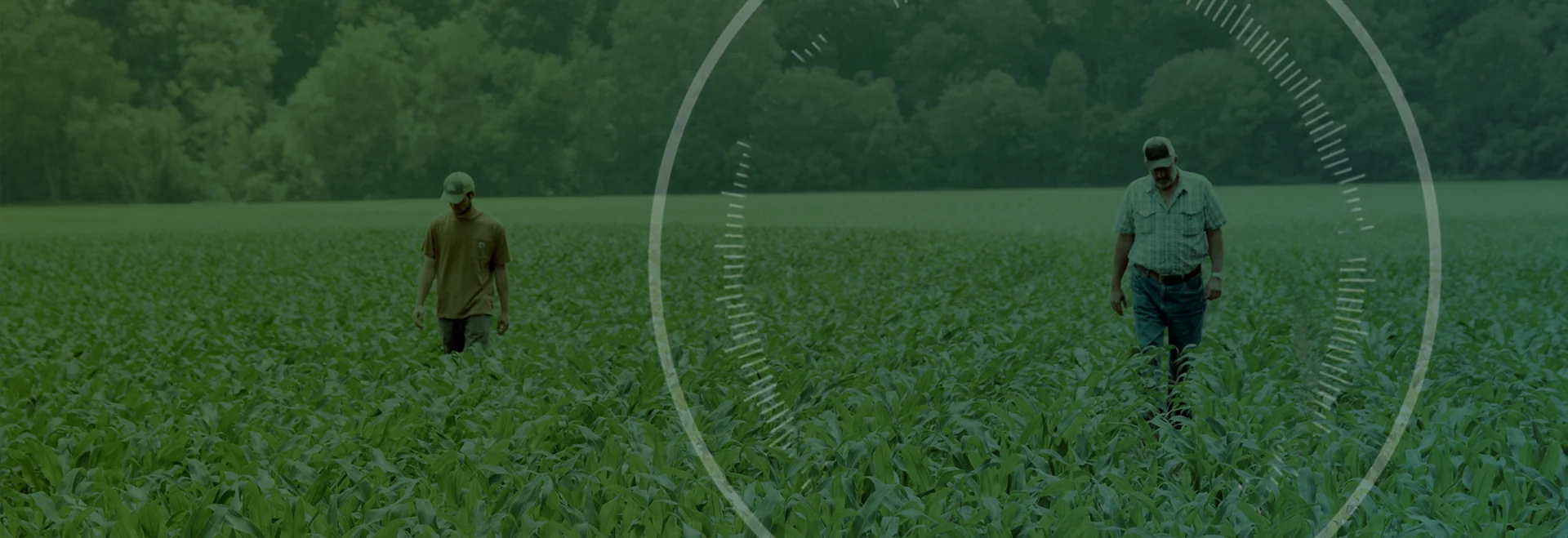
“The difference between crop scouting and crop intelligence can be related to having a basket of berries or having a baked berry pie, sliced and ready-to-eat on a plate in front of you,” says Mark Bradke, Iowa-based Taranis Regional Account Manager. “I would rather have the pie.”
 Crop scouting and crop intelligence are both integral components of modern farms of all sizes with different production objectives and goals. Each tool can play a vital role in enhancing crop management, yield and overall farm productivity. The differences, as Bradke shares, are largely related to workload, efficiency, and the final product.
Crop scouting and crop intelligence are both integral components of modern farms of all sizes with different production objectives and goals. Each tool can play a vital role in enhancing crop management, yield and overall farm productivity. The differences, as Bradke shares, are largely related to workload, efficiency, and the final product.
For the purposes of this article, we assume that our reader has a good understanding of traditional crop scouting, its importance to crop health and the mechanics of how data is gathered.
We love Mark’s berry pie analogy. It certainly mirrors the relationship between crop scouting and crop intelligence—you can’t have crop intelligence without the data that comes from crop scouting. The difference for retailers and the farmers they serve comes from both the quality and quantity of data collected, the efficiency in which it is acquired and how data is analyzed to produce actionable information.
Crop scouting will always be one of the most important management tools farmers and retailers have at their disposal. The method in which that task is accomplished, however, has had room for improvement for decades.
Expanding on Mark’s pie baking: Taranis picks the berries, analyzes which berries will make the sweetest pie, bakes the pie and serves it up on a plate…we also provide the recipe so if ingredients need to be changed for the next “pie”, the list of how last year’s was produced is at your fingertips.
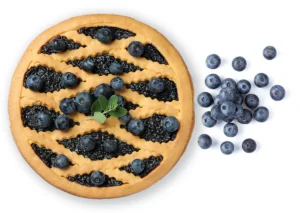
Taranis crop intelligence removes the guesswork of what’s happening on every plant on every acre of a field. Traditional scouting as the sole means of crop monitoring through the growing season, by foot or four-wheeler, isn’t just inefficient, it’s costly. Retail agronomists are tasked with covering thousands of acres every growing season, often spread out across multiple counties. Before Taranis, prioritizing fields relied on spot-checking fields – visual observation and recollection of those observations for notes that will serve as the season’s guide for management. The problem: Human scouts can miss subtle signs of distress or variability in crop conditions, and manual data recording is prone to errors and inconsistencies, which can affect the reliability of the scouting reports.
“When you’re covering a lot of acres over the growing season, it’s easy to miss things. It doesn’t have anything to do with work ethic, in fact, daylight to dark hours are the norm for agronomists in-season,” Bradke says. “It isn’t practical to look at every acre with the traditional scouting model, in fact, it isn’t possible. Taranis records–in leaf-level detail–every acre…even the insects that are chewing on a leaf…Taranis doesn’t overlook anything.”
“The agriculture industry will always need agronomists. Taranis allows agronomists to be agronomists rather than road warriors – drive to the field, walk to the location with an issue and put together an action plan.”
Using drones and high-resolution cameras as the vehicle for data capture, Taranis digitally captures, records and uses artificial intelligence to analyze every detail of every acre.
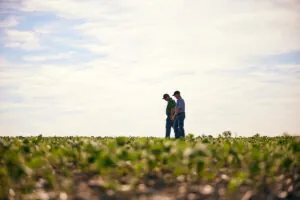
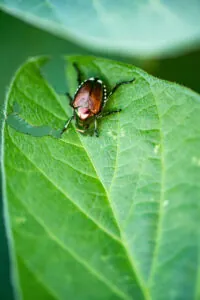 With more than 500 million data points collected, and growing with every field flight, the proprietary artificial intelligence machine Taranis has built analyzes data at lightning speed. The output of that analysis is actionable information, the hallmark of crop intelligence. For the past two decades, data has been the buzzword in the industry, propelling the adoption and use of technology in agriculture. Today, the industry understands that data is only as good as the actionable intelligence it can produce.
With more than 500 million data points collected, and growing with every field flight, the proprietary artificial intelligence machine Taranis has built analyzes data at lightning speed. The output of that analysis is actionable information, the hallmark of crop intelligence. For the past two decades, data has been the buzzword in the industry, propelling the adoption and use of technology in agriculture. Today, the industry understands that data is only as good as the actionable intelligence it can produce.
“Taranis’ data-driven crop intelligence can produce a field report on the dashboard that has analyzed hundreds of thousands of chew patterns on leaves throughout a field, identified the insect(s) causing them and rank areas by severity,” says Bradke, “An agronomist can walk directly to the area indicated, verify the infestation and work with the farmer to create an action plan before the infestation spreads. That’s data in action.”
Agriculture is built on relationships, and while crop intelligence can’t replace a customer relationship, it can strengthen it. Bradke says that the relationships Taranis helps to strengthen is a win-win for the industry.
“There’s no substitute for providing a farmer the information he or she needs for decision-making. And when you can do it in a timeframe that saves money and or yield, sometimes both – that’s how loyalty is built and customer loyalty backed by performance is what sets retailers apart,” he says.
For a retail agronomist, the hit or miss logistics of spotting issues within a selected area can be tricky to build a conversation from. The Taranis dashboard removes the silence. Both an agronomist and farmer can pull up the same report, view the same issues and have a conversation around the best path forward to fit the operation’s goals.
“I’ve been invested in Taranis since it was introduced to me while I was working as a sales agronomist,” says Bradke. “It’s a game changer for an ag retailer, and it’s a life changer for an agronomist.”
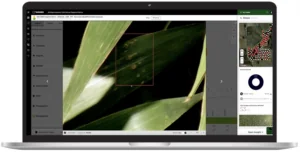
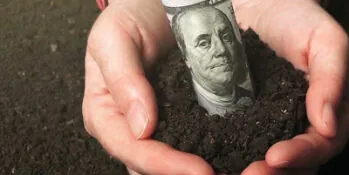
A new strategic partnership between Taranis and Steward Link is easing the burden of program application and validating implemented conservation practices —unlocking significant revenue potential for growers.
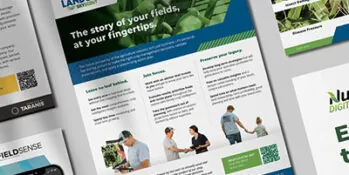
Branding. It’s more than a logo. Your company’s brand ultimately represents an experience; every interaction a person has with your brand is an experience: good, bad, or indifferent. From the way the chosen color palette is perceived and the emotions it evokes to the phone call that ends with what we all hope is a friendly and knowledgeable voice on the other end of the line, it all matters.

Starting a new lease off on the right foot is beneficial for both the landowner and farmer and can be achieved by aligning goals and establishing a transparent relationship built on honesty and trust.